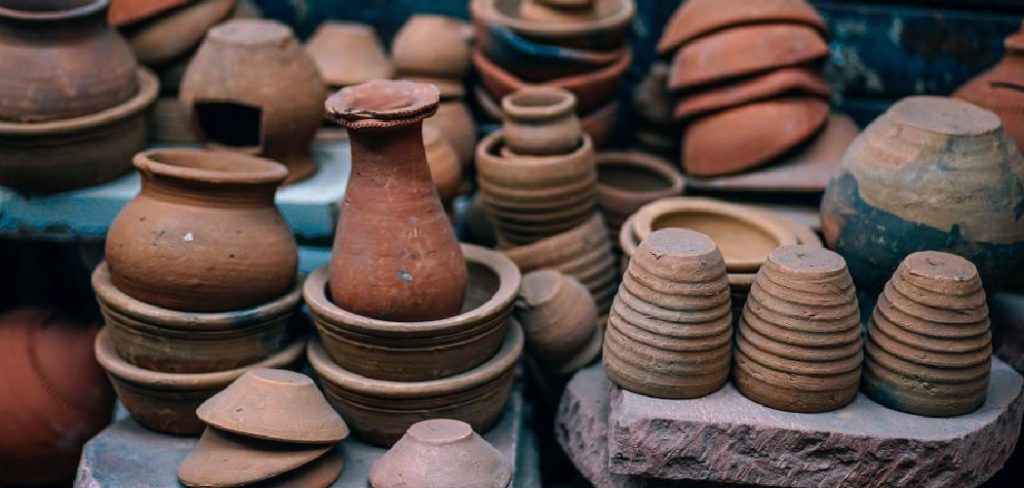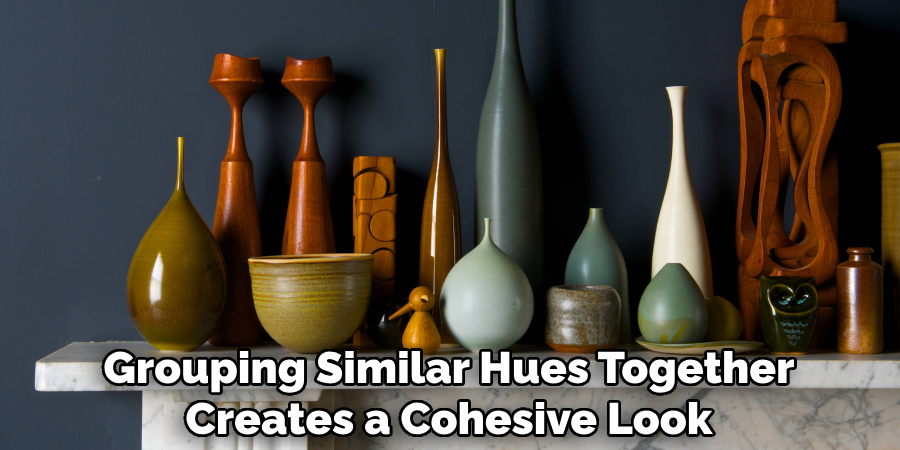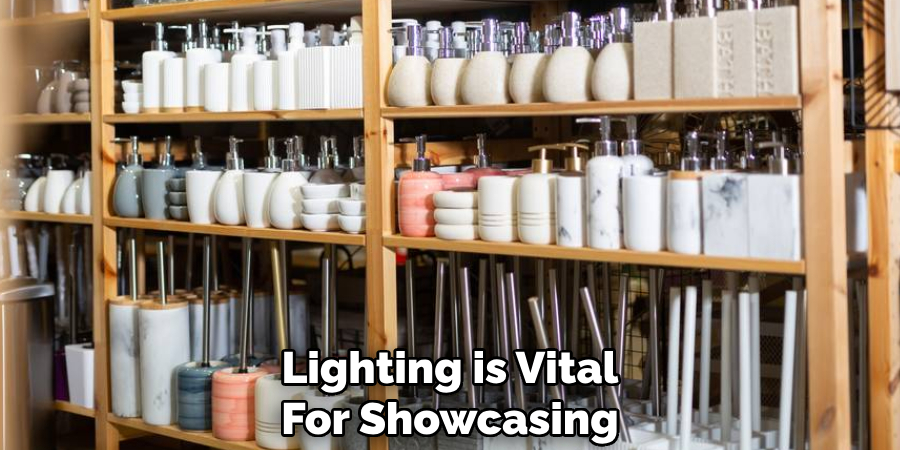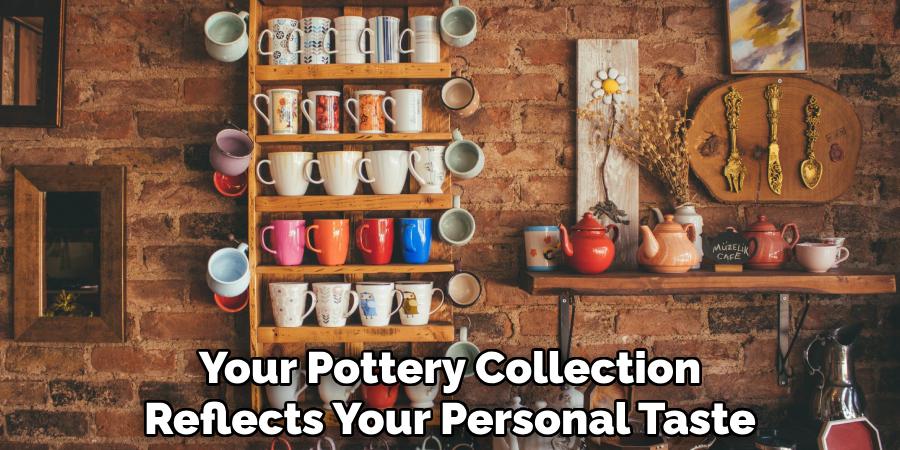Pottery collections bring a timeless charm to any living space. Whether it’s artisanal bowls, vintage vases, or handcrafted plates, displaying your pottery collection elegantly can enhance the aesthetics of your home while showcasing your personal style. However, figuring out how to display pottery collection in a way that’s both visually appealing and functional can seem daunting, especially for beginners.

The key lies in understanding proper arrangement techniques, using space effectively, and ensuring each piece gets the spotlight it deserves. This guide will walk you through practical strategies for displaying your pottery collection beautifully, whether your collection is small or expansive. With a step-by-step approach designed for beginners, you’ll soon be able to curate stunning displays that highlight your prized pieces while complementing your home decor.
Why Knowing How to Display Pottery Collection Matters
Displaying a pottery collection is more than just putting pieces on a shelf. It’s a creative process that transforms objects into art and gives your space personality and warmth. A well-arranged pottery display can set the tone of a room, impress visitors, and even increase appreciation for the craftsmanship behind each piece.
Many collectors face challenges such as clashing colors, overcrowded shelves, or improper lighting, which can detract from the beauty of these unique items. Learning how to display pottery collection properly ensures that your pieces are safe, organized, and visually captivating. Whether you’re a seasoned collector or just starting out, knowing how to create a stunning display truly elevates the enjoyment and value of your pottery.
Tips for Displaying Your Pottery Collection
Choose the Right Shelving: Opt for sturdy shelves that can support the weight of your pottery without warping. Wooden or metal shelves work well, but make sure they are securely anchored to prevent tipping or accidents.
Organize by Theme or Color: Grouping similar pieces together—whether by glaze color, design style, or cultural origin—creates a cohesive and visually appealing display. This also makes your collection easier to appreciate at a glance.
Use Proper Lighting: Good lighting is crucial to highlight the textures, patterns, and colors of your pottery. Consider using adjustable LED spotlights or display-case lighting to illuminate each piece without causing damage from excessive heat or UV rays.
Create Levels and Depth: Using risers or tiered stands allows you to display more pieces within a limited space. This technique also adds depth and dimension to your arrangement, making it more dynamic and interesting.
Protect Your Pieces: Avoid overcrowding your shelves to minimize the risk of accidental breakage. Additionally, consider using soft pads or rubber bumpers beneath the bases of heavier pieces to prevent scratches.
By following these tips, you can transform your pottery display into a beautiful and timeless showcase that truly reflects your passion and dedication as a collector.
Step-by-Step Guide on How to Display Pottery Collection
Step 1: Assess Your Collection
Begin by taking stock of your pottery collection. Identify the number of pieces you own, their colors, sizes, and styles. Group similar items together, such as all vases or all bowls. Categorizing your pottery will help you plan your display based on themes, aesthetics, or practicality. If your collection includes rare or valuable pieces, consider allocating them a spot with extra attention and care.

Step 2: Choose the Right Display Surface
The next step is identifying surfaces suitable for showcasing your collection. Shelves, cabinets, and credenzas are some of the most popular options. Floating shelves work well for modern or minimalist setups, while rustic wooden shelves add warmth to farmhouse or eclectic styles. Wall-mounted cabinets with glass doors can be ideal for treasured pieces that require protection.
Ensure the surface is sturdy and stable, especially if it will hold heavy or fragile items. For extra visual appeal, you can line your shelves with decorative paper or cloth in neutral tones to highlight the pottery.
Step 3: Organize by Size and Shape
Arranging your collection by size and shape creates balance and makes the overall display more pleasing to the eye. Place larger pots or plates at the back, and layer smaller items in front to ensure everything is visible. For a creative twist, intersperse tall, slender pieces with shorter ones to add variation.
Consider using plate stands or small pedestals for special items that require elevation. This layering technique not only makes the display dynamic but also prevents the collection from appearing flat or cluttered.
Step 4: Use Color to Your Advantage
Color coordination plays a crucial role in displaying pottery effectively. Grouping similar hues together creates a cohesive look, while contrasting colors add vibrancy. For instance, blue and white pottery looks stunning against dark wooden shelves, while earthen-toned pieces pop on lighter backgrounds.
Avoid overcrowding your space with too many competing shades; instead, limit the color palette for each area to create a visually harmonious arrangement. If your collection is particularly varied, consider rotating pieces seasonally to keep your display looking fresh and balanced.

Step 5: Optimize Lighting
Lighting is vital for showcasing the intricate details and textures of your pottery. Use soft, warm lighting to highlight the curves and patterns on each piece. Place spotlights or track lighting above shelves to direct attention to specific areas of your display.
LED lights are a great choice as they emit minimal heat, ensuring the preservation of delicate ceramics. Avoid harsh lighting, such as fluorescent bulbs, as they can wash out colors and cast unflattering shadows. If using natural light, be cautious of direct sunlight, which may cause discoloration over time.
Step 6: Incorporate Other Decorative Elements
Blending pottery with other decorative elements enhances the overall effect. Arrange your pieces alongside books, candles, plants, or framed art for added dimension. For instance, a tall vase next to a potted plant or a pair of bowls set near an elegant candle creates a visually appealing vignette.
Be mindful of proportions when mixing decor items. Each accessory should complement, not overpower, the pottery. This approach not only adds depth to your display but also shapes the narrative you wish to convey with your collection.
Step 7: Focus on Safety and Stability
Fragile pottery demands caution—go the extra mile to ensure stability. Use museum gel or double-sided adhesive pads to secure pieces on shelves, especially in households with pets or children. If displaying on higher surfaces, avoid stacking items precariously.
For open shelves, consider anchoring the furniture to the wall to prevent accidents. Taking these precautions helps you enjoy your collection without worry and ensures its preservation for years to come.

Step 8: Rotate Pieces Periodically
Displaying all your pottery at once can make the space look overcrowded. Instead, rotate your collection periodically. This not only keeps your display fresh and interesting but also allows you to showcase different pieces throughout the year.
Rotating is especially useful if some pieces are seasonal or if you enjoy experimenting with various arrangements. Store unused pottery carefully in padded containers to avoid breakage or chips in the meantime.
Step 9: Personalize the Display
Your pottery collection reflects your personal taste, so don’t hesitate to add elements that make it uniquely yours. Incorporate heirloom pots alongside newer additions for a meaningful juxtaposition. Adding context—like labeling rare pieces or providing brief descriptions—can spark conversations and intrigue visitors.
Think of your display as an extension of your home’s personality. When you focus on telling a story through the arrangement, the result becomes far more engaging and memorable.
To elevate your pottery display, consider layering pieces at various heights to create visual depth and interest. Use risers or stack books beneath smaller pots to add dimension. Arrange items in odd-numbered groupings, as these are naturally more appealing to the eye. For a cohesive look, try grouping pottery by color, texture, or shape. Integrate complementary decor like plants, candles, or textiles to enhance the overall aesthetic while keeping the pottery as the focal point. Lighting is another key factor—spotlights, under-shelf LEDs, or even natural light can bring out the unique details and glazes in your collection.
Frequently Asked Questions Section
What are the best surfaces for displaying pottery?
Shelves, cabinets, and mantels are excellent choices for displaying pottery. Glass cabinets with lighting provide an elegant way to protect and showcase valuable pieces, while open shelves blend practicality with style. Whichever surface you choose, ensure it’s sturdy and matches your overall decor.
How can I prevent my pottery from getting damaged?
Use practical safety measures to protect your pottery. Start by securing items with museum gel or adhesive pads. Avoid stacking fragile items unless they are explicitly designed to nest. Protect your pottery from direct sunlight and fluctuating temperatures, as these can weaken glazes and lead to cracks.
Can I display small and large pottery together?
Yes, mixing sizes is a great way to create variety and depth in your display. Place larger pieces as focal points and arrange smaller items around them. Ensure balance by spacing out items evenly and avoiding overcrowding to make every piece stand out.

How do I coordinate colors for a cohesive look?
Choose a consistent palette to tie the display together. Group similar hues or complementary colors to create harmony. For example, earthy tones blend beautifully for a rustic aesthetic, while bright, contrasting colors can add a modern touch.
Is lighting important when displaying pottery?
Absolutely, lighting enhances the details and textures of pottery, making it more appealing. Use soft, warm lighting or spotlights to direct attention to certain areas. Avoid direct sunlight and overly harsh lights, which can damage the pottery or make it look less attractive.
Conclusion
When done thoughtfully, displaying a pottery collection can transform a space, adding artistry and elegance to your home. Whether you’re showcasing vintage vases, handmade bowls, or colorful plates, the arrangement should highlight your collection’s beauty while reflecting your unique style.
With these step-by-step tips on how to display pottery collection, you’re equipped to create a stunning, professional-worthy display. Remember to focus on balance, creativity, and preservation, and your pieces will remain a source of pride for years to come. Start curating your display today and enjoy the joy of sharing your passion for pottery with others!
Specialization:
- Master of wheel-throwing, hand-building, and advanced glazing techniques
- Focus on creating both functional pottery and decorative art pieces
Recognition:
- Celebrated by collectors and art enthusiasts for creating one-of-a-kind pieces that blend artistry with functionality
- Participates in local and national exhibitions, earning accolades for his innovative designs and craftsmanship
Passion:
- Deeply committed to exploring and pushing the boundaries of ceramic artistry
- Continuously experiments with new materials, firing techniques, and artistic concepts to evolve his craft
Personal Philosophy:
- Believes in the transformative power of art, aiming to evoke emotions and connections through his ceramic creations
- Advocates for sustainability in ceramics, using eco-friendly materials and practices whenever possible


